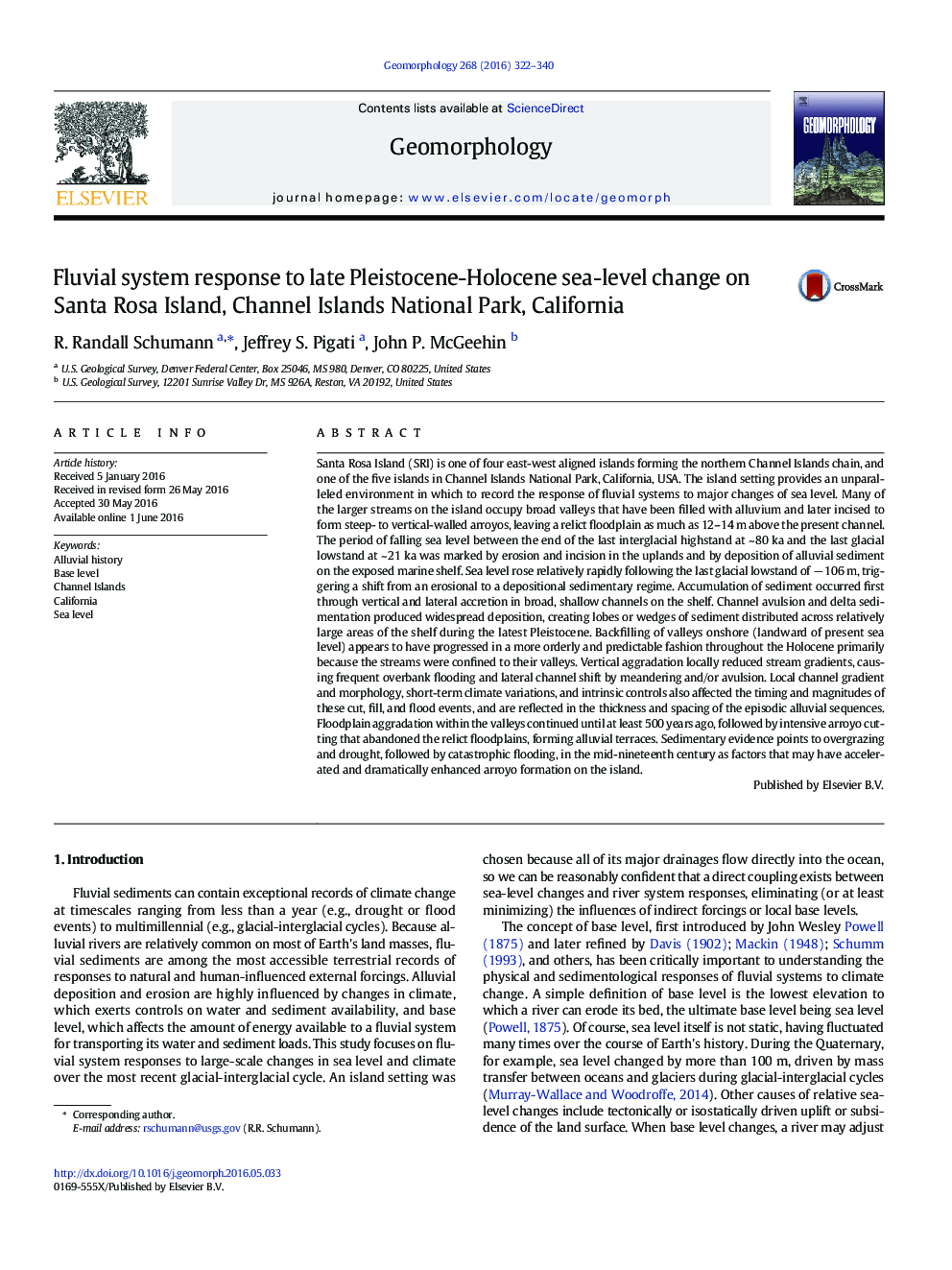| Article ID | Journal | Published Year | Pages | File Type |
|---|---|---|---|---|
| 4683984 | Geomorphology | 2016 | 19 Pages |
•Santa Rosa Island is one of the five islands in Channel Islands National Park, California, USA•Most streams occupy broad valleys that have been filled with 10-14 m of alluvium that was later cut by deep arroyos•Alluvial aggradation was a response to sea-level rising from its Last Glacial lowstand of -106 m to its present level•Arroyo incision was likely triggered by drought, overgrazing by sheep, and catastrophic flooding, in the late 1800s•Arroyo formation would likely have occurred naturally as a complex response to stabilization of sea level
Santa Rosa Island (SRI) is one of four east-west aligned islands forming the northern Channel Islands chain, and one of the five islands in Channel Islands National Park, California, USA. The island setting provides an unparalleled environment in which to record the response of fluvial systems to major changes of sea level. Many of the larger streams on the island occupy broad valleys that have been filled with alluvium and later incised to form steep- to vertical-walled arroyos, leaving a relict floodplain as much as 12–14 m above the present channel. The period of falling sea level between the end of the last interglacial highstand at ~ 80 ka and the last glacial lowstand at ~ 21 ka was marked by erosion and incision in the uplands and by deposition of alluvial sediment on the exposed marine shelf. Sea level rose relatively rapidly following the last glacial lowstand of − 106 m, triggering a shift from an erosional to a depositional sedimentary regime. Accumulation of sediment occurred first through vertical and lateral accretion in broad, shallow channels on the shelf. Channel avulsion and delta sedimentation produced widespread deposition, creating lobes or wedges of sediment distributed across relatively large areas of the shelf during the latest Pleistocene. Backfilling of valleys onshore (landward of present sea level) appears to have progressed in a more orderly and predictable fashion throughout the Holocene primarily because the streams were confined to their valleys. Vertical aggradation locally reduced stream gradients, causing frequent overbank flooding and lateral channel shift by meandering and/or avulsion. Local channel gradient and morphology, short-term climate variations, and intrinsic controls also affected the timing and magnitudes of these cut, fill, and flood events, and are reflected in the thickness and spacing of the episodic alluvial sequences. Floodplain aggradation within the valleys continued until at least 500 years ago, followed by intensive arroyo cutting that abandoned the relict floodplains, forming alluvial terraces. Sedimentary evidence points to overgrazing and drought, followed by catastrophic flooding, in the mid-nineteenth century as factors that may have accelerated and dramatically enhanced arroyo formation on the island.
